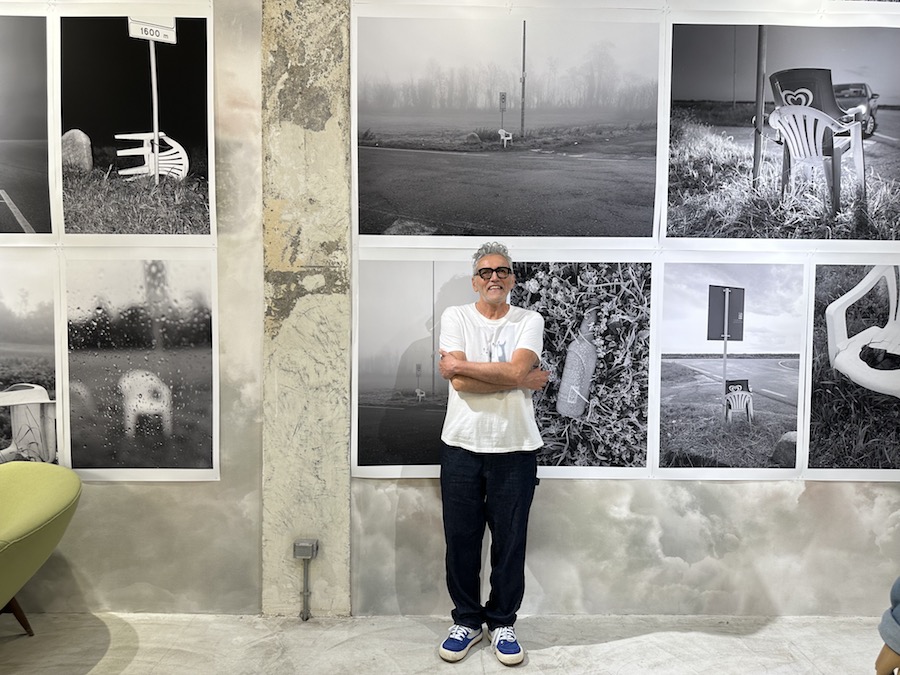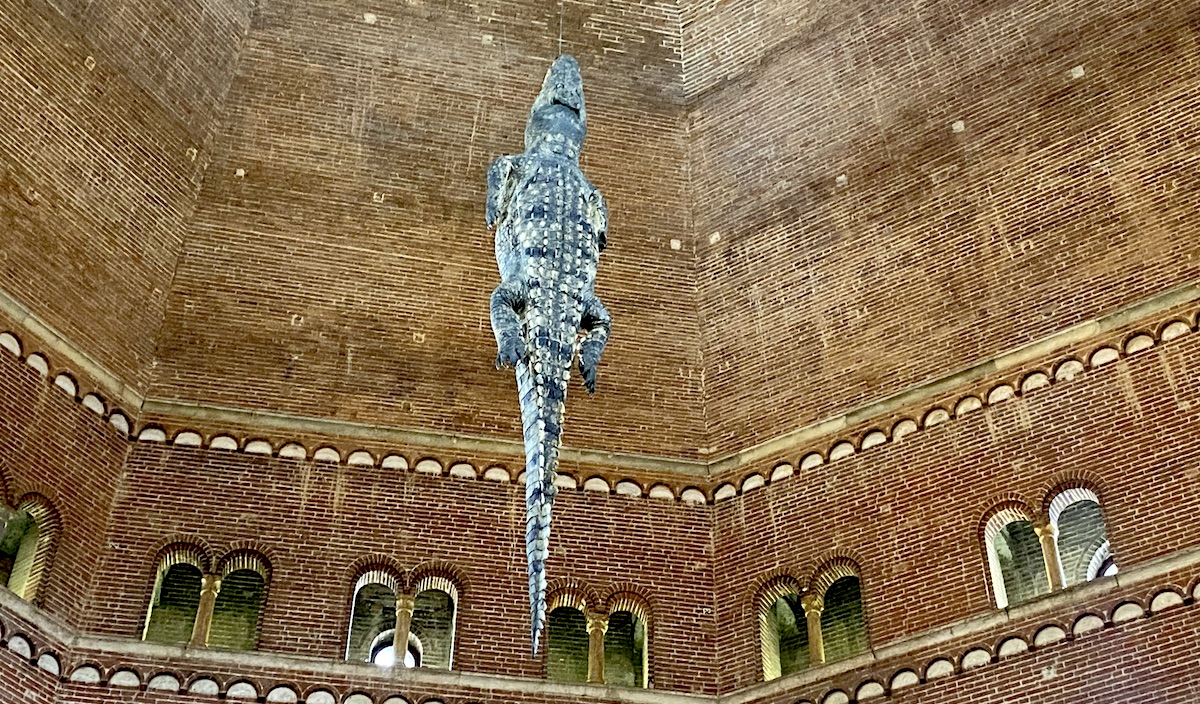Lombardia’s rich cultural heritage is much more than the famous Milanese Duomo, museums, galleries and the Prada Foundation. This past week, the beautiful small city of Cremona, in the heart of Pianura Padana, hosted the first Cremona Contremporanea-Art Week, featuring more than seventy artworks ranging from installations, sculptures, paintings and videos.
Best known as an international music and violin-making centre, Antonio Stradivari (1633-1737) left a heritage of more than 100 Cremonese violin-making workshops and a collection of the world-famous Stradivarius violins. The young curator Rosella Farinotti views this first-ever Contremporanea Art Week as a chance to present contemporary art within historical spaces. The Cremona Centre, with its Renaissance arcade, a bell tower with an astronomical clock, and religious structures, is a magnificent backdrop for this week-long art celebration.
The eight-sided Battistero (Baptistry), built in 1167, is a perfect setting for Maurizio Cattelan’s “Ego.” The taxidermied life-sized crocodile, suspended with a dangling tail, was first exhibited in 2019 in Blenheim Palace in Oxford, England, but this is the first showing in Italy. In the bricked octagonal setting, the crocodile is bathed in light filtered from two lancet windows and a stained glass window in the centre of the dome. The tail faces the baptismal font, and the mouth opens towards the skylit dome. This presentation of unconventional art in sacred places resulted in a controversy covered by the Italian media.
Cattlelan insists “Ego” is not driven purely as his usual provocation and has said, “Crocodiles have been protagonists of rituals, religions and magical beliefs, and urban legends. They are creatures that both frighten and fascinate and have been deeply symbolic since the beginning of humanity.’ “Ego” will be on view for the rest of the summer and continues the tradition of the crocodile that was featured in medieval bestiaries as a symbol of both sin and salvation.
Another striking piece that will last throughout the summer is Swiss master abstractionist Olivier Mosset, whose monumental yellow rectangular installation illuminates the deconsecrated 17th-century church of San Carlo Cremona. For 2022-23, New York-based artist and curator Servane Mary has invited artist friends to create site-specific work, including Jamaican American artists Arthur Sims and Dara Friedman.
The monumental “San Carlo PG” stretches to the edges of the nave and continues Mosset’s research into monochromatic and geometric abstraction. Flooding the floor with a blast of sunshine, the verticality of the painting itself is challenged.
Other venues include the Cremona Town Hall, originally built in 1206 and continually evolving thought out the centuries. Among the ancient frescoes and 17th-century carriage are several specifically created new pieces. Especially striking were Alessandro Aguido’s “Residence Acquario” circular sculptures made of wood that echo the hay bales currently being harvested throughout the area.
I also checked out the Museo Diocesano, a newly opened museum dedicated to religious art. A concluding event will be a performance by Invernomuto on the banks of the River Po.
This widespread, free and well-attended event involved the whole city in celebrating contemporary art exhibited in magnificent public and private spaces, bringing energy and inspiration to the beautiful city of Cremona.

Foundation Marconi Milano – Gianni Colombo’s A Space Odyssey until July 17
This retrospective introduced me to the work of Gianni Colombo (1937-1993), one of Italys’ great experimental and kinetic artists. Born in Milan in 1937, he was an early proponent of researching light, gravity and perception and won first prize in the 1968 Venice Biennale for painting.
Inspired by Kubrick’s seminal 1968 film “Space Odyssey,” Colombo created walkable environments that challenged gravity and perception. The beautifully constructed sensory disruptions are even more striking with the realization that they were made in another millennium.
This gorgeously curated exhibition includes suspended, kinetic structures “Spazi Curv (Curved Spaces), created in the 1990s. Also included are “Cromostruttura” from the early1960s, evocative plexiglass and steel columns with haunting electromechanical animation and visionary images of mind-altering art.
Once again, travel reminds me of how provincial our American art experiences can be. Gianni Colombo, a pioneer of spatial exploration, deserves greater international artistic recognition.

Nonostante Marras Attilio Solzi “”Tra Presenza e Assenza” (Between Presence and Absence)
Award-winning photographer Attilio Solzi spent one year photographing an empty chair vacated by a sex worker in the daytime. The book “The Absence” contains 365 black and white photographs documenting the abandoned plastic chair on a highway where a prostitute plied her trade on a minor road. The human presence, only suggested, continues Solzi’s investigation into marginal groups.
Also shown are 42 prints of aggressive, punk, charming and beautiful nudes. A series of evocative collages are exhibited in a tower constructed of vintage wooden boxes.
The opening, at a fashion/gallery, was crowded with an intergenerational and enthusiastic audience. Curator and fashion designer Antonio Marras, a fixture of the Milanese art scene, also showed his hand-built ceramics that share a similar punk sensibility to the photographs. I especially loved his corseted vases, rough, sexy and inviting.
Photos by Luigi Cazzaniga © Artlyst 2023 and LC

